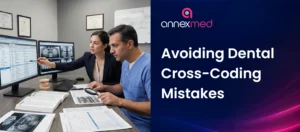MRI brain scans are essential for diagnosing neurological conditions such as stroke, tumors, multiple sclerosis, and dementia. Among these studies, CPT 70551 MRI of the brain without contrast remains one of the most frequently billed imaging codes in neurology.
According to industry insights, roughly 40 million MRI scans are performed annually in the United States, and about 25% are brain exams, totaling nearly 10 million brain MRIs each year. Because it provides clear imaging without contrast, CPT 70551 is widely used as an initial diagnostic scan for non-acute neurological concerns.
Understanding how to use CPT 70551 correctly is important for clean claim submission, reducing denials, and ensuring appropriate reimbursement. This article covers clinical use, documentation, and billing practices that help support accurate claims.
What Is CPT Code 70551
CPT 70551 refers to Magnetic Resonance Imaging (MRI) of the brain, including the brain stem, without contrast material. This code captures a non-invasive diagnostic procedure that uses magnetic fields and radio waves to produce detailed images of the brain’s internal structures. It helps detect abnormalities such as lesions, tumors, infarcts, and demyelinating diseases without the use of contrast dye.
This code can represent either the technical component (performed by the imaging facility), the professional component (interpreted by the radiologist), or the global service when both are billed together. For example, hospitals often bill globally, while neurologists or radiologists billing only for image interpretation use modifier -26 to report the professional portion.
As per the 2025 Medicare Physician Fee Schedule (MPFS), CPT 70551 carries a global relative value unit (RVU) of approximately 6.52, reflecting both technical and professional work. It differs from other brain MRI codes like 70552 and 70553, which include contrast use. CPT 70551 is used when the initial scan is sufficient to provide diagnostic clarity or when contrast is contraindicated due to patient allergies or renal conditions.
Applicable Scenarios
CPT 70551 is commonly used when a brain MRI is required for diagnostic evaluation without the need for contrast. It is often the first-line imaging option in neurology because it provides high-resolution images suitable for identifying structural and functional brain abnormalities.
Typical clinical scenarios include:
• Persistent or unexplained headaches
• Seizure evaluation or unexplained neurological symptoms
• Stroke follow-up to assess ischemic or hemorrhagic damage
• Dementia or cognitive decline screening
• Head trauma without acute bleeding
• Multiple sclerosis or demyelinating disease monitoring
Providers may also use CPT 70551 when patients are allergic to contrast media or have renal impairment, making contrast studies unsafe. According to the American Academy of Neurology (AAN) guidelines, non-contrast brain MRI is recommended as an initial diagnostic test in many non-acute neurological conditions.
Proper documentation of the clinical indication and “without contrast” justification is crucial to support medical necessity and ensure clean claim submission.
Coding & Billing Guidelines
• Use CPT 70551 only for a full non-contrast brain MRI. Bill once per session.
• Do not bill 70551 with 70553 for the same encounter. Review NCCI edits for bundled codes.
• Prevent unbundling errors. When additional imaging is done, check CCI edits and use modifier 59 or X modifiers only when the service is distinct and properly documented.
• Apply the correct component: modifier 26 for professional, modifier TC for technical, or global billing when both are performed.
• Pair the CPT with a clear ICD-10 code that supports medical necessity (e.g., G40.909, R51.9, S06.0X0A). Avoid vague diagnoses.
• Confirm the place of service, as payment rules vary between hospital outpatient and imaging centers.
• Review CMS LCDs for payer-specific coverage rules before submitting claims.
Modifiers
Proper modifier use ensures accurate reporting and payment for CPT 70551. Since brain MRI services involve both technical and professional work, modifiers clarify the exact portion billed.
• Modifier 26 (Professional Component): Used when only the physician’s interpretation and report are billed.
• Modifier TC (Technical Component): Applied when billing only for equipment, technician time, and facility use.
• No Modifier (Global Billing): Used when both components are performed and billed by the same entity.
In specific situations:
• Modifier 52 (Reduced Services): Report when the MRI is incomplete or terminated early, such as when a patient cannot tolerate the exam.
• Modifier 76 (Repeat Procedure, Same Physician): Used if the same provider repeats the scan due to image quality or technical issues.
• Modifier 77 (Repeat Procedure, Different Physician): Applied when another provider repeats the MRI for clinical reasons.
• Modifier 59 (Distinct Procedural Service): Used only if another MRI or MRA is performed on the same day and documented as a separate, medically necessary study.
Using modifiers correctly supports claim clarity, minimizes payer rejections, and ensures compliance with NCCI and payer-specific billing rules.
Documentation Best Practices
Accurate documentation supports medical necessity and helps prevent avoidable denials for CPT 70551. Start with a clear order that states the reason for the exam and includes a note that the study is performed without contrast. Payers look for clinical justification when contrast is not used.
The radiology report should describe key findings and specify that a non-contrast MRI technique was performed. Terms such as “no mass effect” or “no midline shift” help strengthen the clinical narrative. Each claim should include the ordering provider’s signed request, relevant patient history, and documented symptoms that support the need for the study. Add comparison details when prior imaging is available.
Common ICD-10 codes that pair well with CPT 70551 include G40.909, G43.909, R51.9, R42, and S06.0X0A. These diagnoses are widely accepted by payers when supported by clinical notes.
To stay audit ready, avoid vague “rule out” language and make sure all prior authorization documents are saved in the patient record. This improves claim reliability and reduces the risk of post-payment review
Reimbursement Insights
Reimbursement for CPT 70551 varies by payer and geographic location. Under the 2025 Medicare Physician Fee Schedule, the national average payment for the global service typically falls between $250–$350. Freestanding imaging centers and hospital outpatient departments may receive different rates, so it is important to confirm the current fee schedule for the correct place of service.
Commercial insurers often reimburse 10–20% higher than Medicare, and many private and Medicare Advantage plans require prior authorization, especially for non-acute imaging requests. Missing authorization remains one of the most common causes of reimbursement delays.
When denials occur, medical necessity is usually the main factor. Appeals are more effective when documentation clearly supports the clinical need and references trusted guidelines such as those from the American Society of Neuroradiology. Accurate coding, correct modifier use, and complete documentation help ensure timely payment and lower the chances of claim rework.
Coding Example
A straightforward coding example helps show how CPT 70551 should appear on a claim. Consider a patient who presents with persistent headaches and dizziness. The provider orders an MRI of the brain without contrast to evaluate possible structural causes. The radiologist performs and interprets the study, and both components are billed by the same facility.
Example Claim Setup:
- CPT Code: 70551
- Description: MRI of the brain without contrast
- ICD-10 Code: R51.9 (Headache) or R42 (Dizziness), depending on documentation
- Billing Type: Global service, since the facility performed both the technical and professional portions
If only the interpretation is billed, modifier 26 should be applied. If only the technical component is billed, modifier TC should be used. Matching the CPT code to a clear diagnosis and maintaining complete documentation helps ensure the claim is accepted on the first submission.
Comparison: CPT 70551 vs 70552 vs 70553
CPT codes 70551, 70552, and 70553 describe MRI studies of the brain, but each code reflects a different use of contrast. Using the correct code helps support medical necessity and prevents claim errors. The table below shows how these codes differ in technique and clinical application.
| CPT Code | Contrast Use | What It Includes | When It Is Used |
| 70551 | Without contrast | Standard MRI sequences of the brain and brain stem | First-line evaluation for headaches, seizures, trauma, or when contrast is not required or contraindicated |
| 70552 | With contrast | Post-contrast MRI sequences only | When contrast is needed to evaluate tumors, infections, vascular abnormalities, or suspected enhancement |
| 70553 | Without and with contrast | Both pre-contrast and post-contrast sequences | When full evaluation is needed for lesions, MS plaques, postsurgical follow-up, or when contrast enhancement must be assessed |
This comparison helps determine which code best matches the clinical purpose and ensures accurate billing across neurology and radiology settings.
Top Denial Triggers for CPT 70551
Common errors that delay payment or trigger audits are usually simple to fix.
- Billing both 70551 and 70553 for the same session. This typically causes bundling denials.
- Missing ABN (Advance Beneficiary Notice) when coverage is uncertain.
- Submitting claims lacking a “without contrast” justification. Payers expect this clarification.
- Incomplete physician orders. Vague or unsigned requests weaken medical necessity.
- Missing prior authorization documentation. This is a frequent cause of reversals.
- No EHR checklist for CPT/modifier pairing. A short verification step prevents avoidable coding mistakes.
Accurate billing for CPT 70551 is foundational to efficient neurology practice operations, relying on three non-negotiable steps: correct code selection, clear documentation of clinical indications, and proper modifier application. Following consistent coding and documentation practices reduces denials, supports medical necessity, and helps ensure smoother reimbursement for neurology practices.
Working with a specialized billing partner can further streamline these processes. AnnexMed’s Neurology billing team assists practices in managing brain MRI claims, from correct code selection to clean documentation and timely submission. With expert support, neurology providers can maintain compliance, reduce administrative burden, and optimize reimbursement for imaging services.
Improve neurology reimbursement outcomes with proven support.
AnnexMed’s neurology billing team helps practices stay sharp with consistent verification, coding accuracy, and denial management.
FAQs
Use it for brain MRIs without contrast when the clinical indication supports non-contrast imaging. Contrast studies require 70552 or 70553.
Common ICD‑10 codes include R51.9 (Headache), G40.909 (Epilepsy), S06.0X0A (Concussion), and R42 (Dizziness).
Modifier ‑26 bills only interpretation, ‑TC bills technical services, and ‑52, ‑76/‑77, or ‑59 apply in special cases.
Many commercial and Medicare Advantage plans require authorization. Submitting without it can delay or reject claims.
Denials often occur due to contrast misuse, missing modifiers, vague orders, or lack of “without contrast” documentation.



























